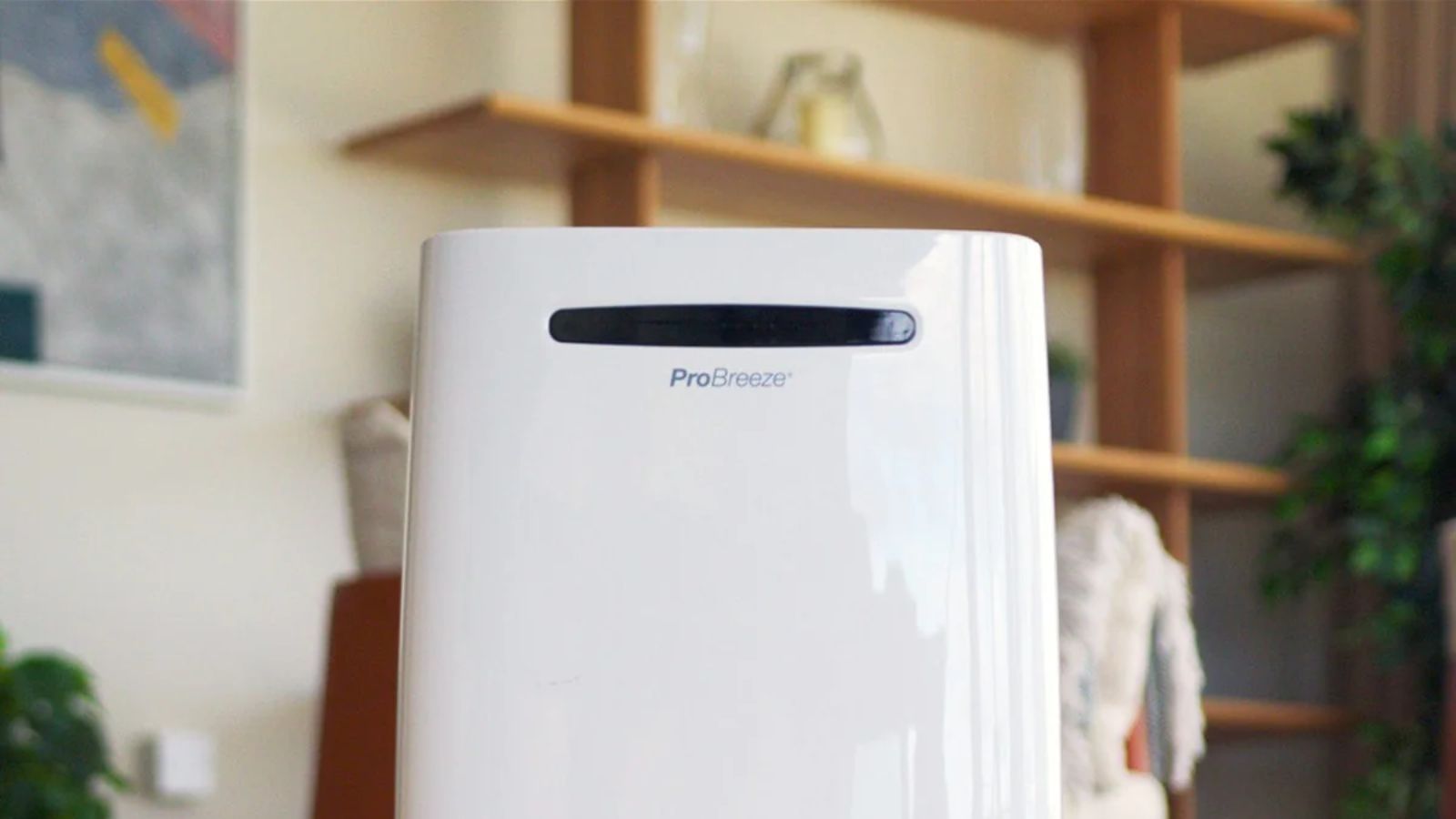
Pro Breeze makes some of the best dehumidifiers on the market and this is one of their best sellers. Does that make it the best of the best? That's for us to test and for you to find out.
If you've done your dehumidifier research, you'll already know that Pro Breeze makes some of the best dehumidifiers on the market. This is one of their latest launches, offering a special laundry mode as well as an immense 20-litre capacity. If you've got deep damp problems, you'll want to listen closely.
Not only does Pro Breeze boast some competitive credentials, but it also has one of the highest efficiency scores and lowest price points. I put it to the test, because, if it can deliver on its promises, it's more than worth all the chatter.
Specifications
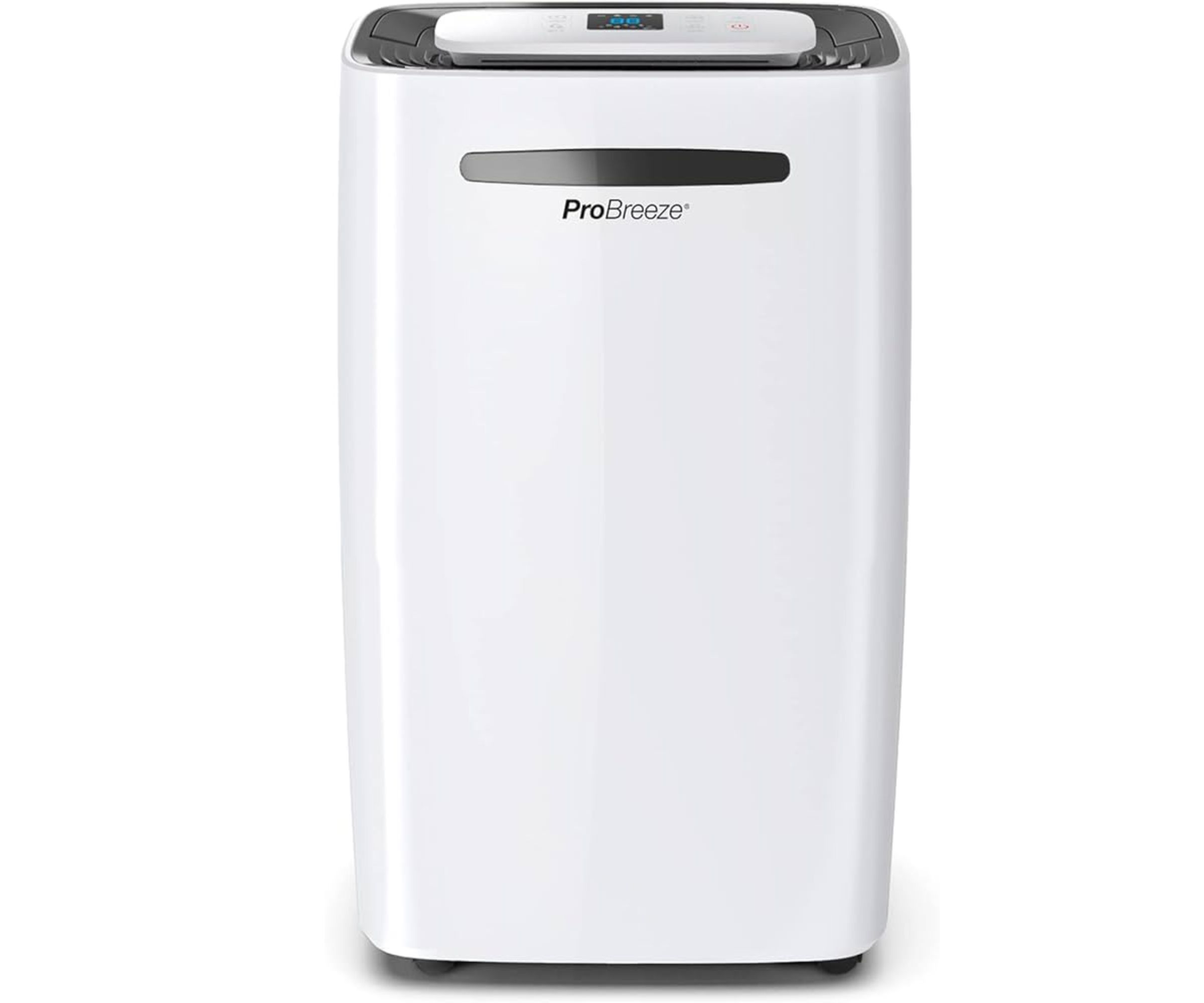
First impressions
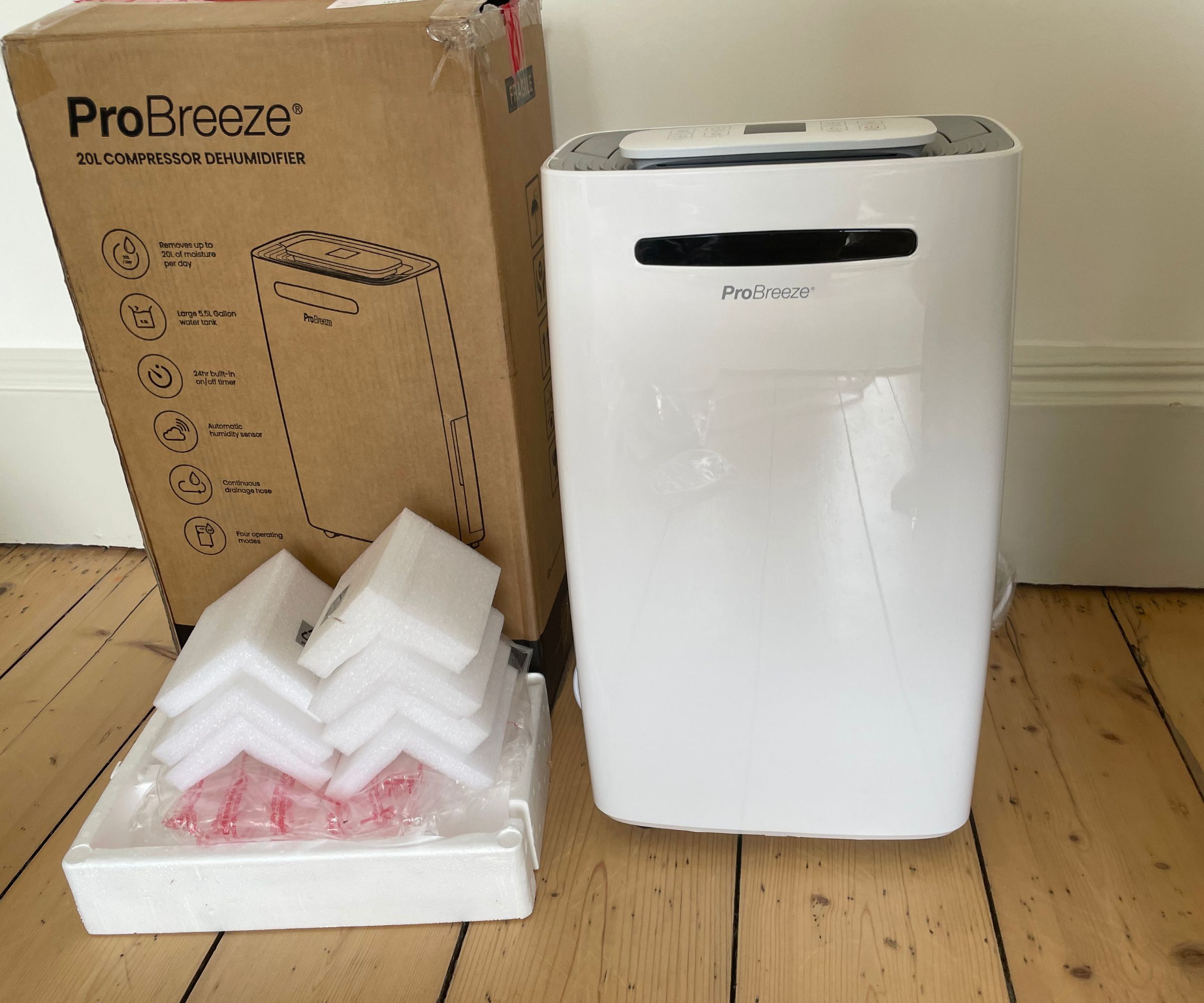
The Pro Breeze has all the signature features of a dehumidifier: it's bulky, white, and glossy, but somehow I like this more than most. The curved edges and premium materials make this feel like it's a cut above the rest. That's not to say that it won't demand some floor space in your hallway, because it will, but it's pretty sleek.
Thankfully, Pro Breeze has anticipated that this is a cumbersome appliance. It's fitted with neat castor wheels and a big handle. Once you've used your muscles to get it out of the box, you've done all the hard work. It's easy to wheel around (just don't carry it up stairs if you're in a hurry).
There's a simple LED screen that displays the current humidity, whilst showing you an array of setting options. This nicely demonstrates that the Pro Breeze is versatile (with laundry modes, fast modes, and more) and that it has one of the biggest capacities that we've tested. Twenty litres of extraction in one day is a big claim that's only rarely delivered upon, but the Pro Breeze has done it.
Who would it suit?
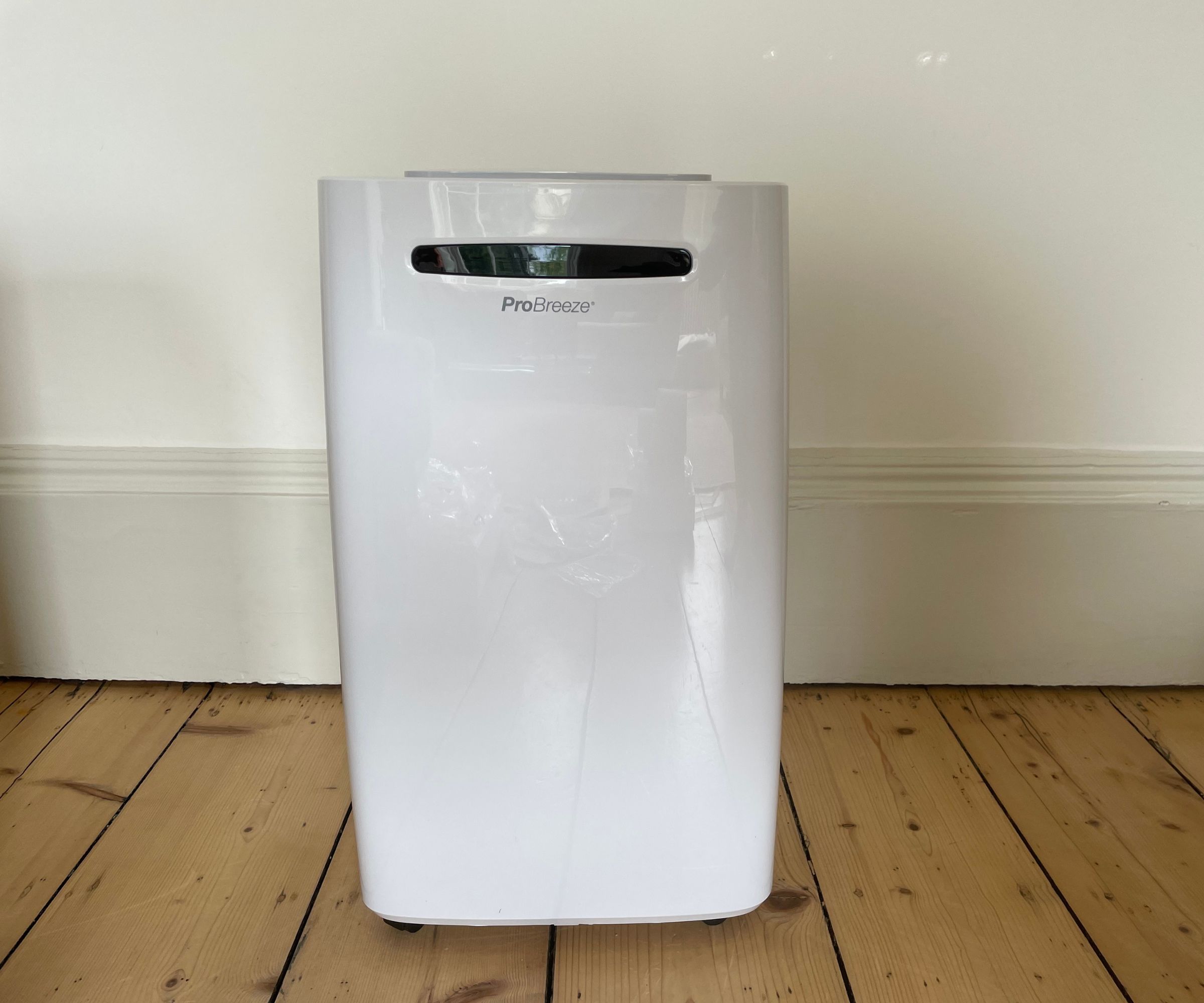
If you're wondering whether the Pro Breeze is for you, there are a few features to consider. Twenty litres of extraction is more than most homes need. The water reservoir is 5.5 litres, which means that, even in seriously damp spaces, you won't need to continuously run back and forth, emptying your dehumidifier.
That kind of capacity and power means that the Pro Breeze suits larger homes well. It's overkill for small spaces, but, with the additional laundry mode, it's the go-to dehumidifier for heavy-duty tasks.
The special laundry mode claims to extract up to 600% more water than similar-sized dehumidifiers. That's an astounding claim that will be music to the ears of people like me who live in damp homes where laundry can take days to dry.
The only caveat I'll add is that this is relentlessly noisy when it's working hard. The fan speeds sound like they're spinning fast enough for the dehumidifier to take off the ground if you select the wrong setting. Note: don't use this in social spaces.
If you've not owned a dehumidifier before and you don't fancy faffing or fussing with settings, the Pro Breeze is perfect. It comes with some simple pre-sets that offer the following:
- Normal: you can toggle between 30 and 80% humidity, depending on which what you want for your home
- Laundry: this reads and responds to the humidity, so it will work hard when o=your laundry is wet and then will ease off as it gets drier
- Strong: this strives to get your humidity to an unnecessarily low 30%. It's noisy, but successful.
- Automated Humidity Detector: monitors your room's humidity, works to achieve the optimal level, and then switches off
You won't need to ask much more from your dehumidifier. Those settings cover just about everything and you can select them at the touch of the button. If you leave it to run, the Pro Breeze will automatically switch off when it has finished whichever task you've assigned. That's every savvy homeowner's dream.
What is it like to use?
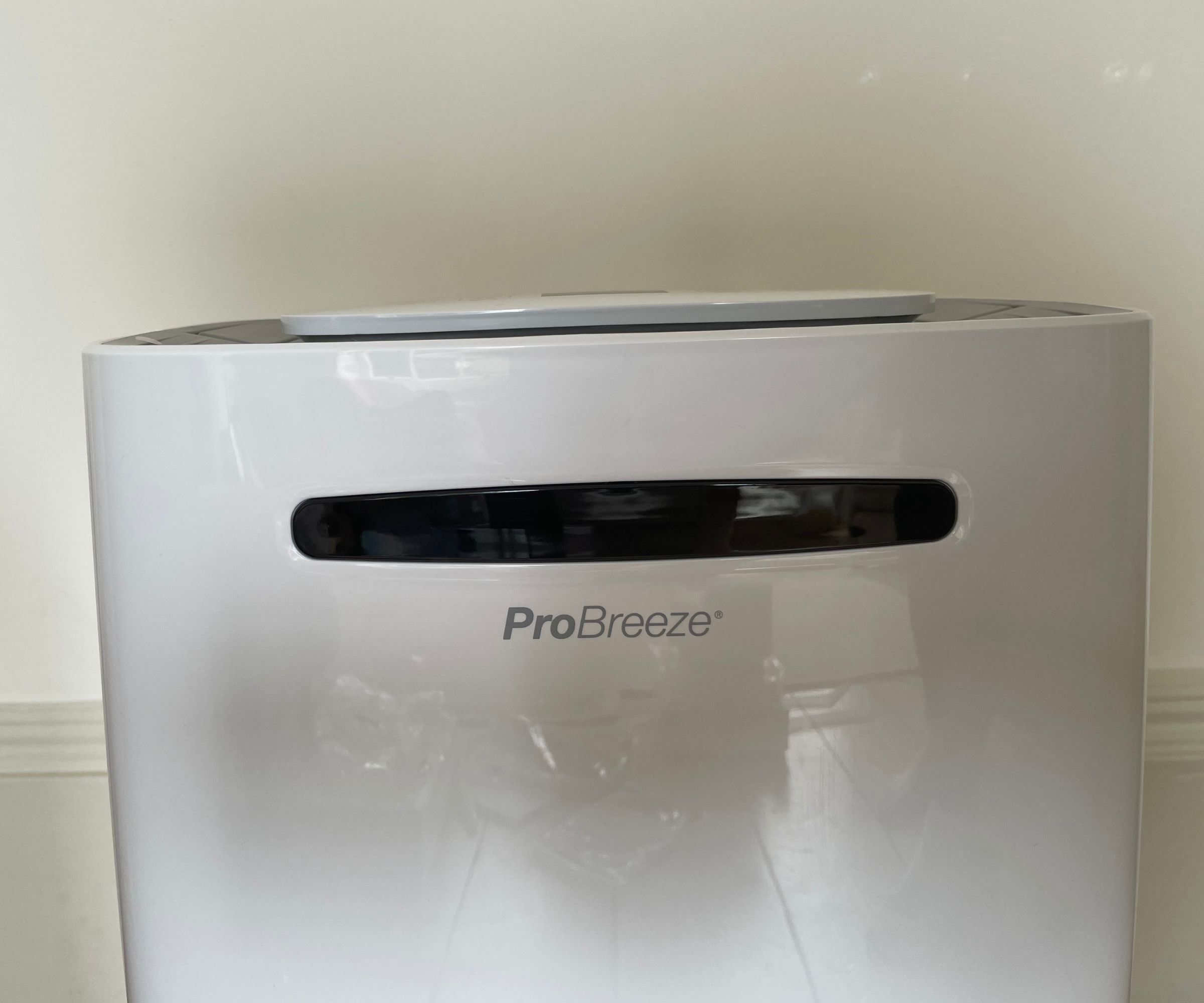
Unlike some other dehumidifiers, this arrives assembled. Before getting started let this sit for a couple of hours. It's a compressor dehumidifier, so the refrigerant inside will need to settle if you want yours to efficiently and effectively dehumidify your space.
The only other thing you'll need to do is attach the hose (if you want to run it in continuous mode). Once all that's done and the machine is plugged in, it's ready. The Pro Breeze doesn't come with a fiddly app or anything to download. It's simple and it's brilliant. I'd venture to say, it's simply brilliant.
If you have five minutes, it's worth perusing the instruction manual, because there are plenty of modes that you can select for different uses that will come in handy beyond the key ones that I described.
Once it's on, the LED control panel will light up and display the room's current humidity. You can toggle between settings easily, but make sure you're very deliberate when you touch the screen. It's not quite as sensitive as a smartphone — yet.
Test 1: humidity and condensation
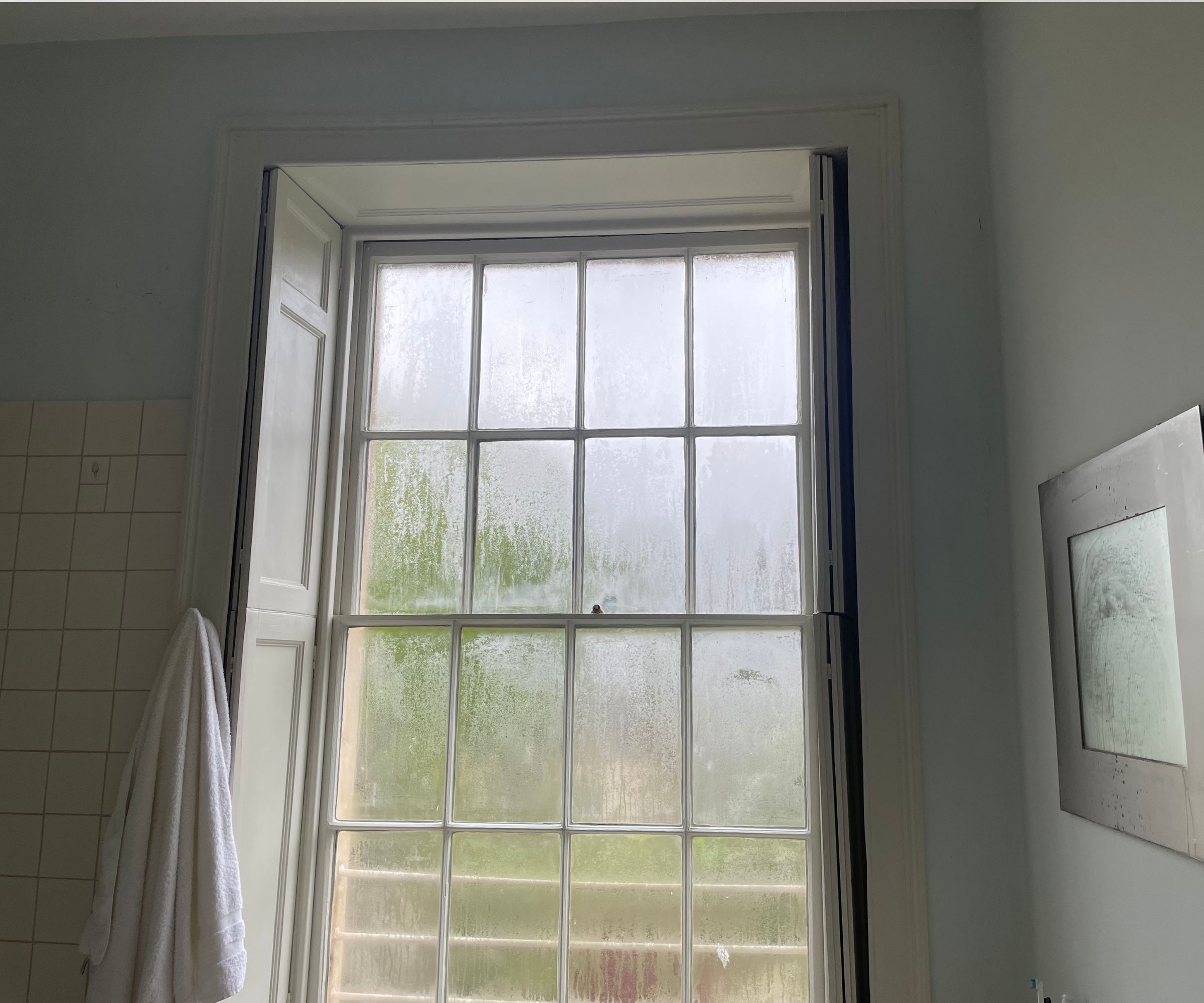
The first test I tasked the Pro Breeze with was clearing condensation. If you’re fed up with fighting a constant battle with condensation on your windows, the Pro Breeze is overqualified to clear condensation, which is a real treat.
In my home, the bathroom takes a whole morning to de-mist after a shower. You can see in the image above that the condensation gets thick. I left the Pro Breeze whirring away and the windows were cleared in five minutes. I couldn't believe my eyes.
No other dehumidifier has completed the task as quickly as that. Granted, this was really noisy whilst it was working - I measured 64 dB, which is marginally quieter than a washing machine — but it worked. If you're a results-orientated person, this aced the test.
Test 2: laundry
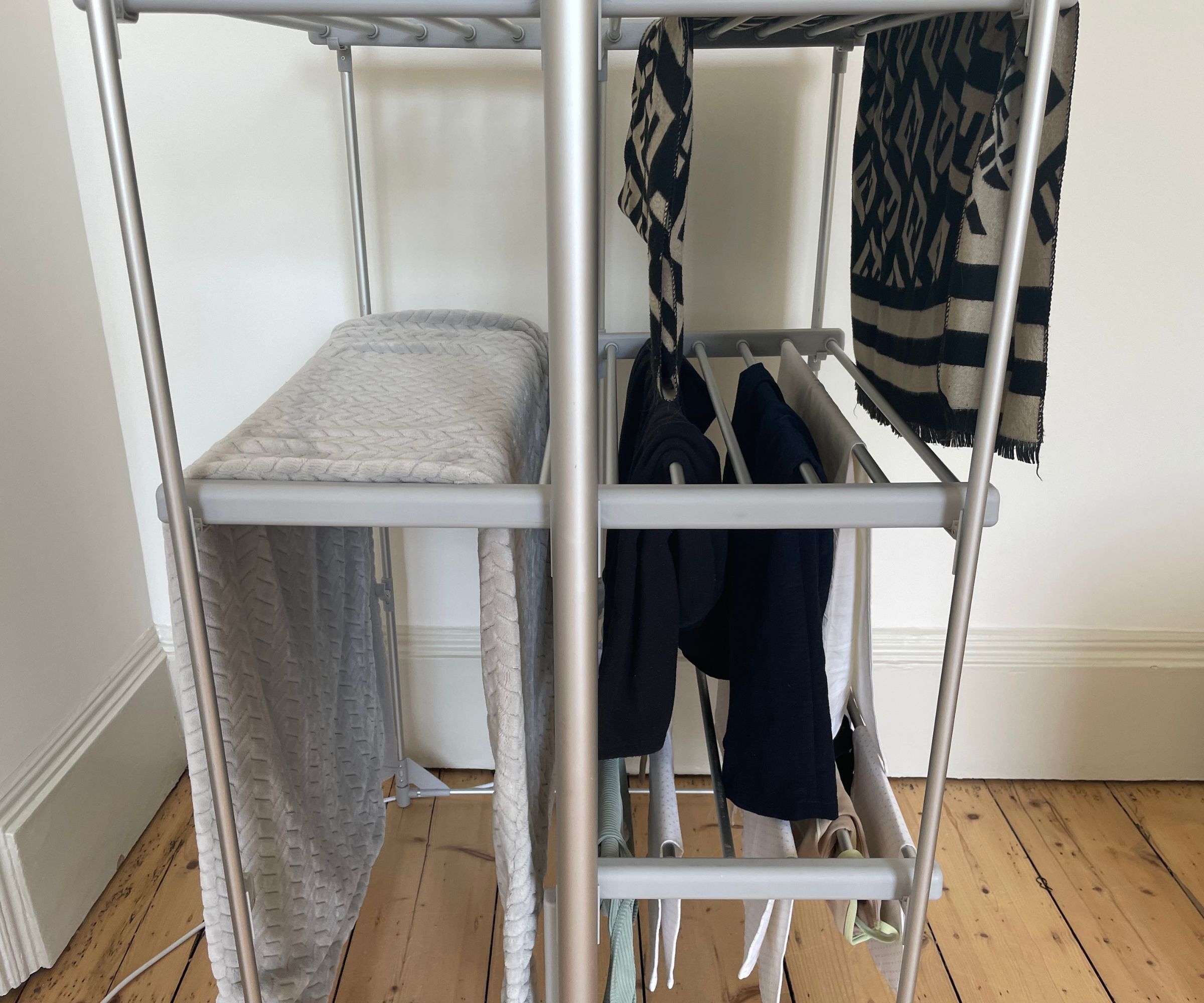
The next test I put all our dehumidifiers through is on laundry. I did a load of washing with a heavy plush blanket, cotton napkins, pillowcases, sportswear, and other clothing. This range gives me a good idea of how the dehumidifier works with different materials.
Normally, this load of washing takes a full 24 hours to dry. The Pro Breeze claims to be six times faster than other dehumidifiers, which are faster than air drying. It sounds like a bold claim, so I was eager to see what this magic laundry function could produce.
Again, I was astounded. I came back to my clothes after just an hour and they were cupboard-dry, even the blanket could be packed away. I might be tempted to run the Pro Breeze on a lighter mode, which would take a little longer for the clothes to dry, because, at full pelt, this is noisy. However, if it does the job, who am I to argue?
In terms of efficiency, this demands more power than comparable models. However, if we say the kWh rate of energy is 27p, this would cost just 6p to run for an hour. That's worth it when you think about how much a tumble drier or a clothes horse costs.
If you want to know more about how you can use your dehumidifier to dry laundry, we have all the answers over here.
Test 3: cellar
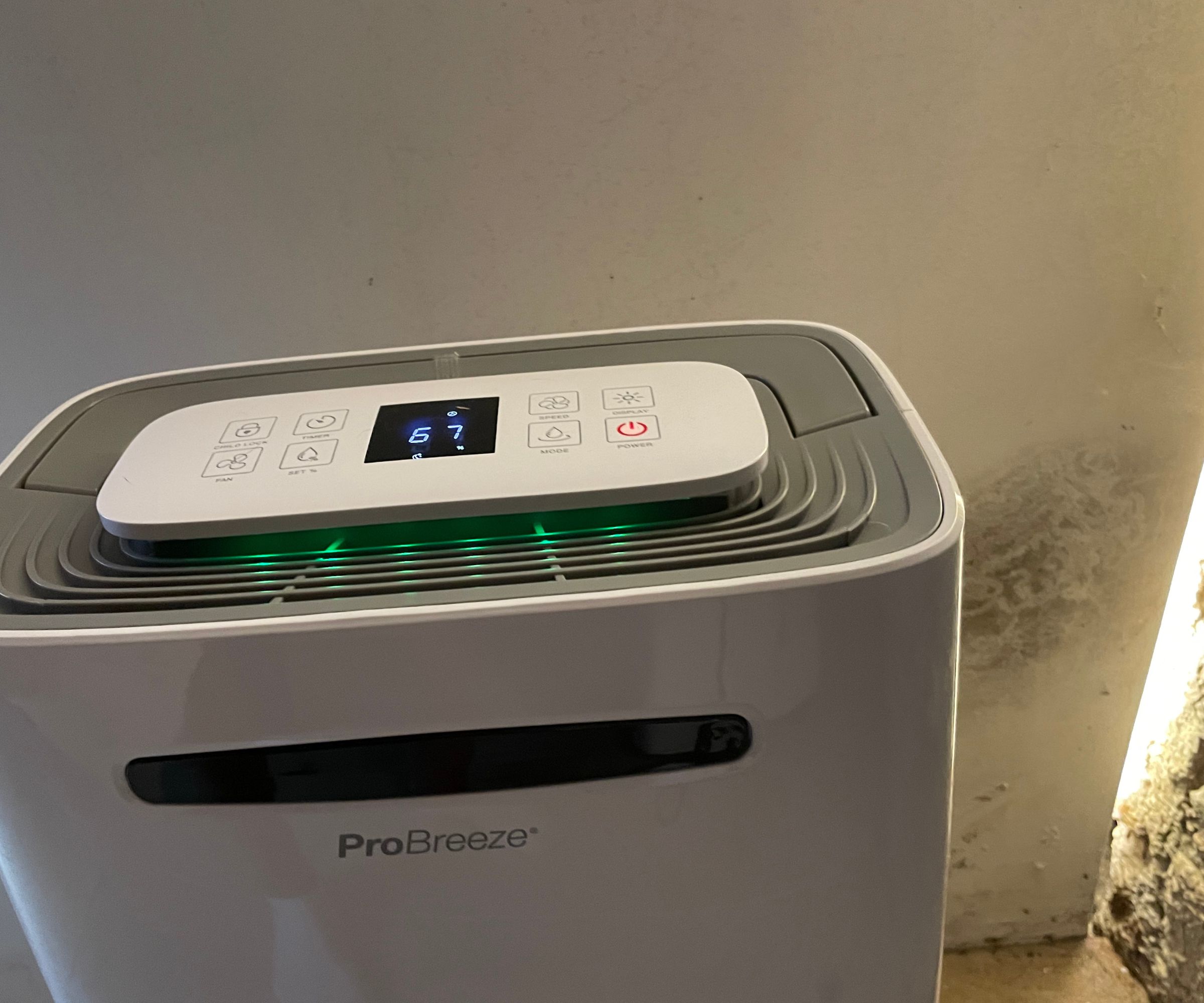
The final test for the Pro Breeze was in my (very damp) cellar. I knew a night wouldn’t magically solve my problems, but I wanted to see how much water the Pro Breeze could collect in 12 hours and how much it could change the humidity levels.
When I plugged the Pro Breeze in, the digital display suggested that my humidity levels were at 67%. I set it to aim for 40% humidity and, in line with its other impressive performances, when I came down in the morning, the humidistat read 41%. The Pro Breeze’s water reservoir matched this finding because it was nearly full of water.
If you're worried about running a dehumidifier overnight, you should check the manufacturer's guide. When I looked up the Pro Breeze, I found that it has a safety setting which shuts the machine off when the water reservoir is full. With an extraction rate like the Pro Breeze's, I would be tempted to use the hose and start draining into a big tub or outside drain. You could achieve some impressive home results.
How does it compare?
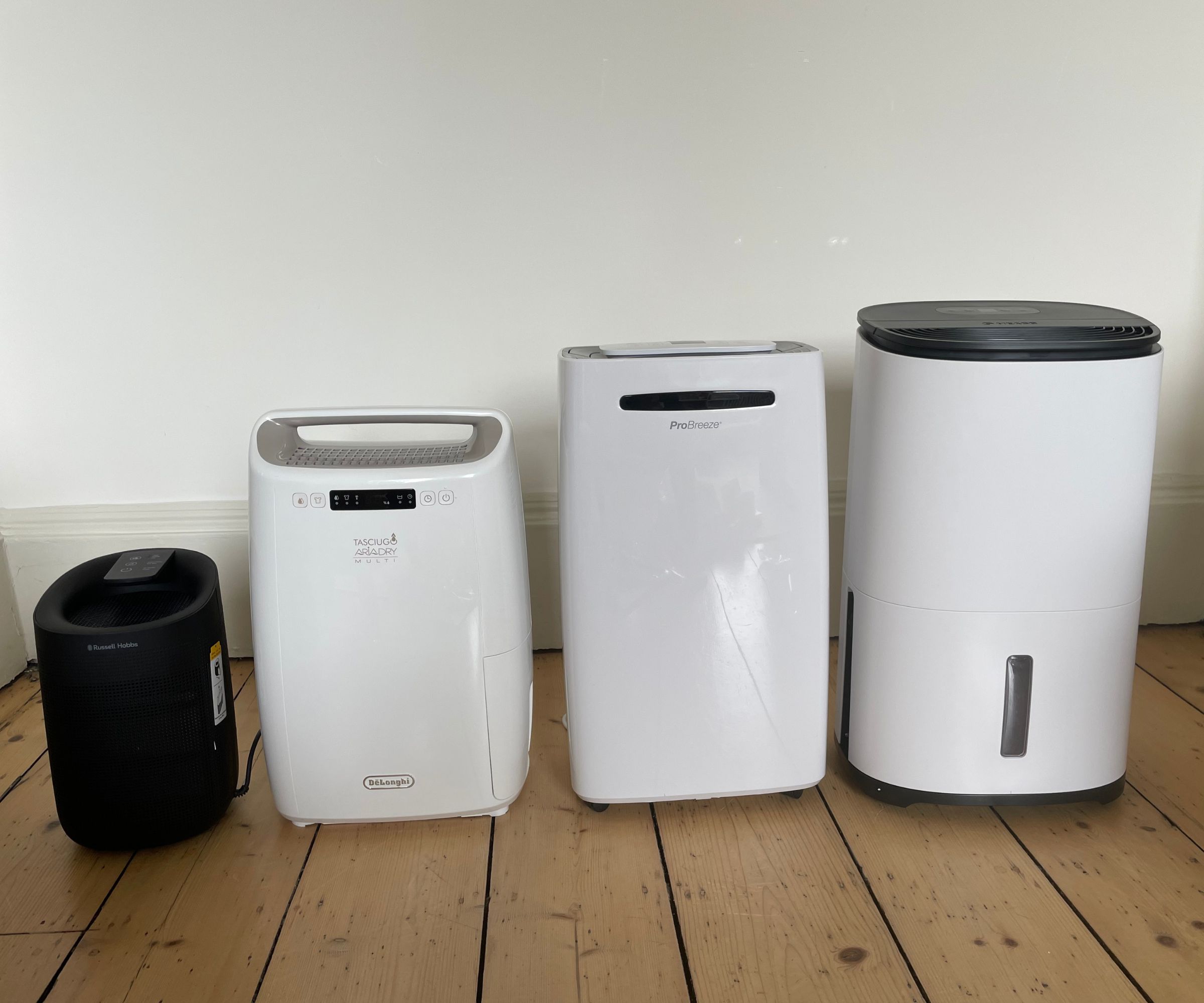
The Pro Breeze was easily one of the best dehumidifiers I've ever used. It had an astounding extraction rate, it's reasonably priced and relatively efficient. That all looks great on paper, but if you're wondering whether it's the best on the market, you might be surprised at how the Pro Breeze compares.
The MeacoDry Arete One is a famously good dehumidifier that's much more efficient than the Pro Breeze. In fact, it costs half the amount to run the Meaco. Even though it's not as effective, if you're money-conscious, that will speak to you. In the context of tumble driers and clothes horses, the Pro Breeze is cheap, but against dehumidifiers, it's relatively expensive.
Pro Breeze has also launched a 'premium' version of the Pro Breeze 20L, which costs just £10. The laundry mode is said to be even more expensive, but without making as much noise and it is more energy efficient. For £10, I think it's worth upping your budget and treating yourself to the Premium model. This is good, but £10 takes you a long way with Pro Breeze.
Maintenance
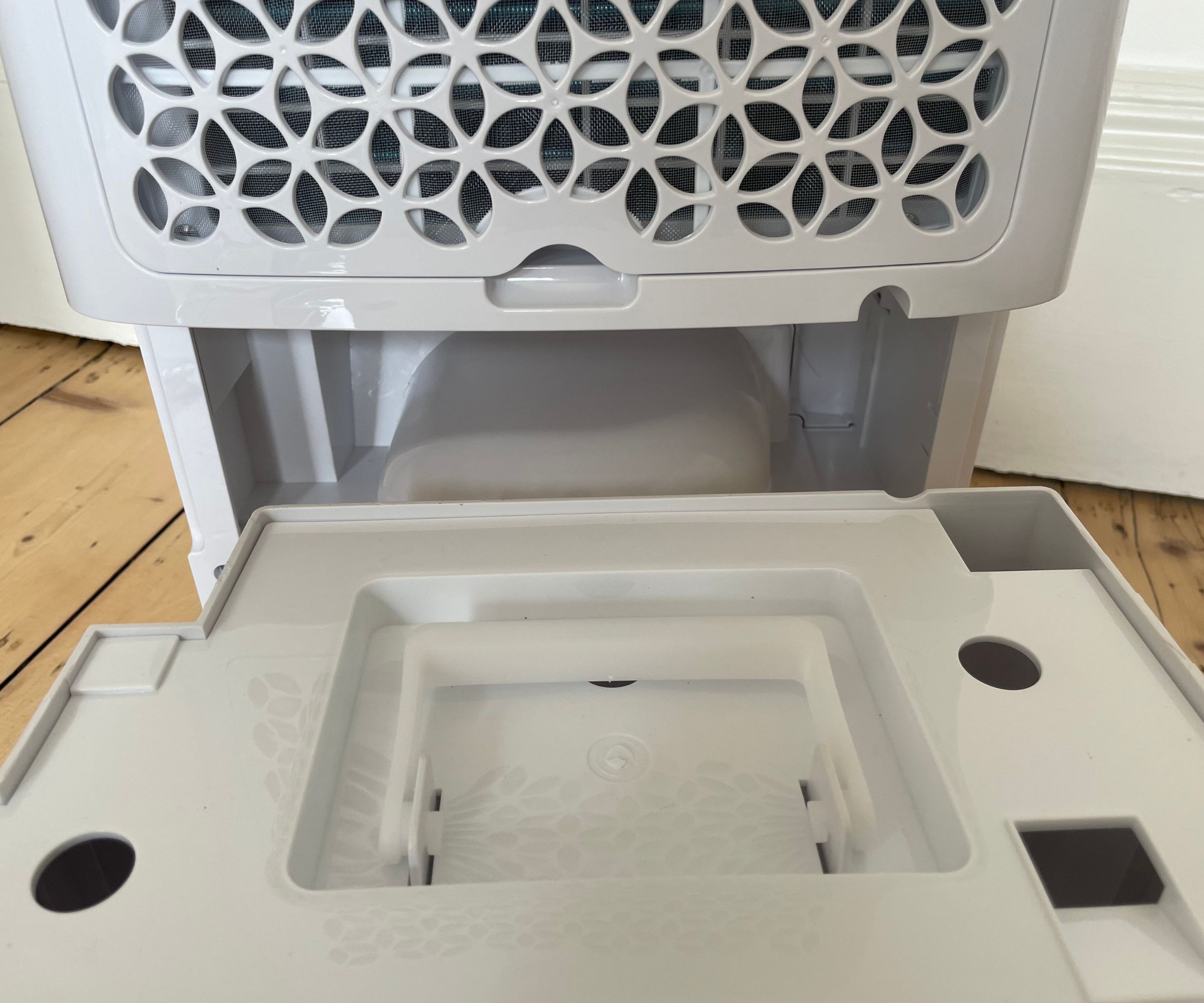
As far as dehumidifiers go, this is relatively low maintenance. The 5.5 litre water tank won't need emptying often and, if you use the tube, it'll need almost no attention at all. If you do choose to use the water tank, there's a useful window where you can check how full the tank is. When your tank is full, the machine will beep twenty times and turn off anyway.
I never like taking out water tanks, because they feel like they're going to spill. You'll certainly need two hands to remove this if you want to avoid any mess; it's quite stiff and moves with sudden jolts. This also comes with a pre-filter and active carbon filter to catch dust. You should clean these regularly, especially since it's only a quick job and can help your room's humidity immensely,
We have a simple, five-step guide for how to clean a dehumidifier that covers everything you will need to do to keep your Pro Breeze in its most efficient condition. It won't take much.
Should you buy it?
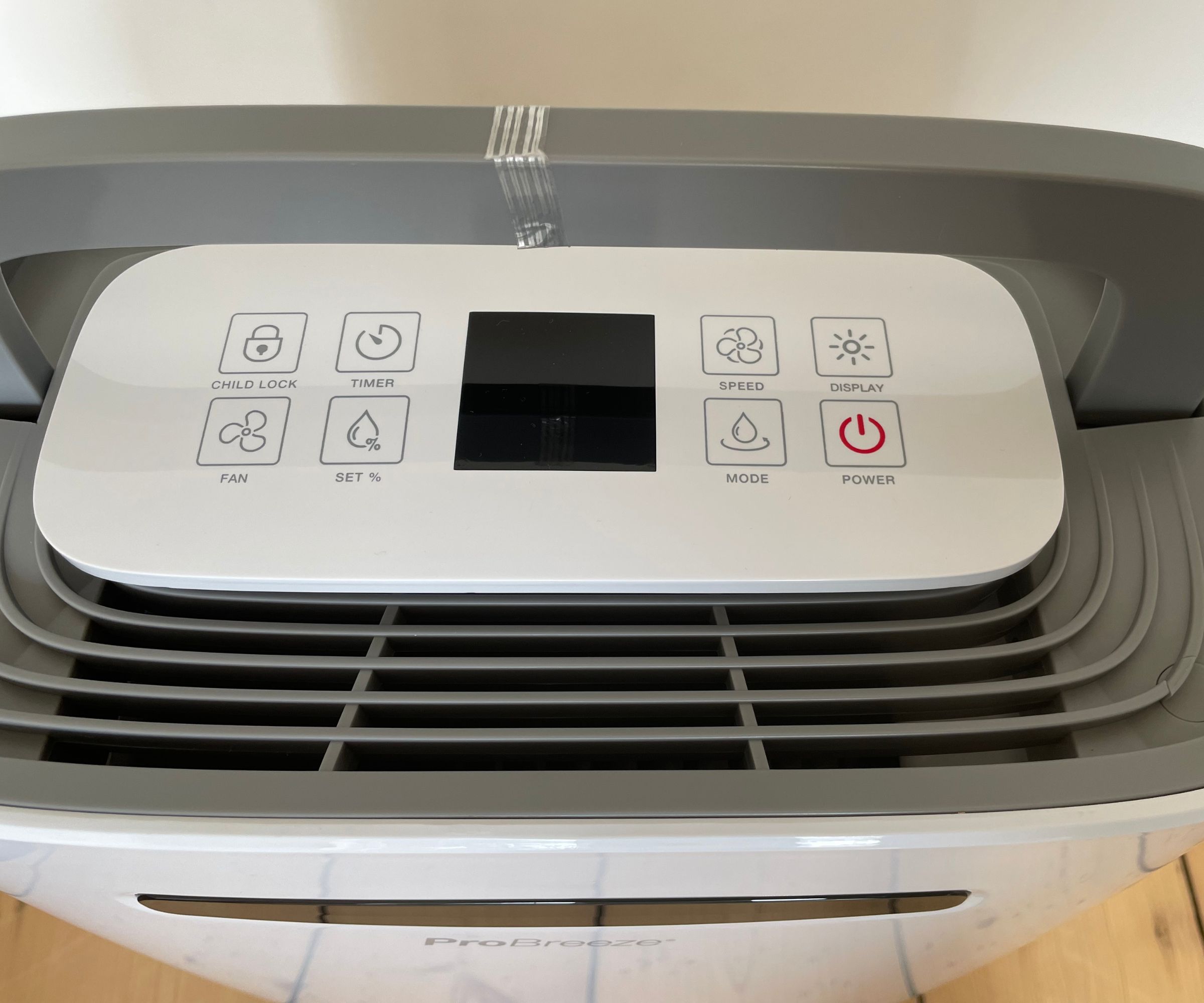
If you value the speed at which your dehumidifier works, this is the best investment you can make when deciding if you should buy a dehumidifier. It scores top marks for everything from cleaning condensation, drying laundry, and dehumidifying my damp cellar.
However, this comes with the caveat that it's noisy. And, for another £10 you could upgrade to the Premium model, which is quieter, more efficient, and has a laundry mode. This is a good investment, but it's not the only model worth looking at.
How we test
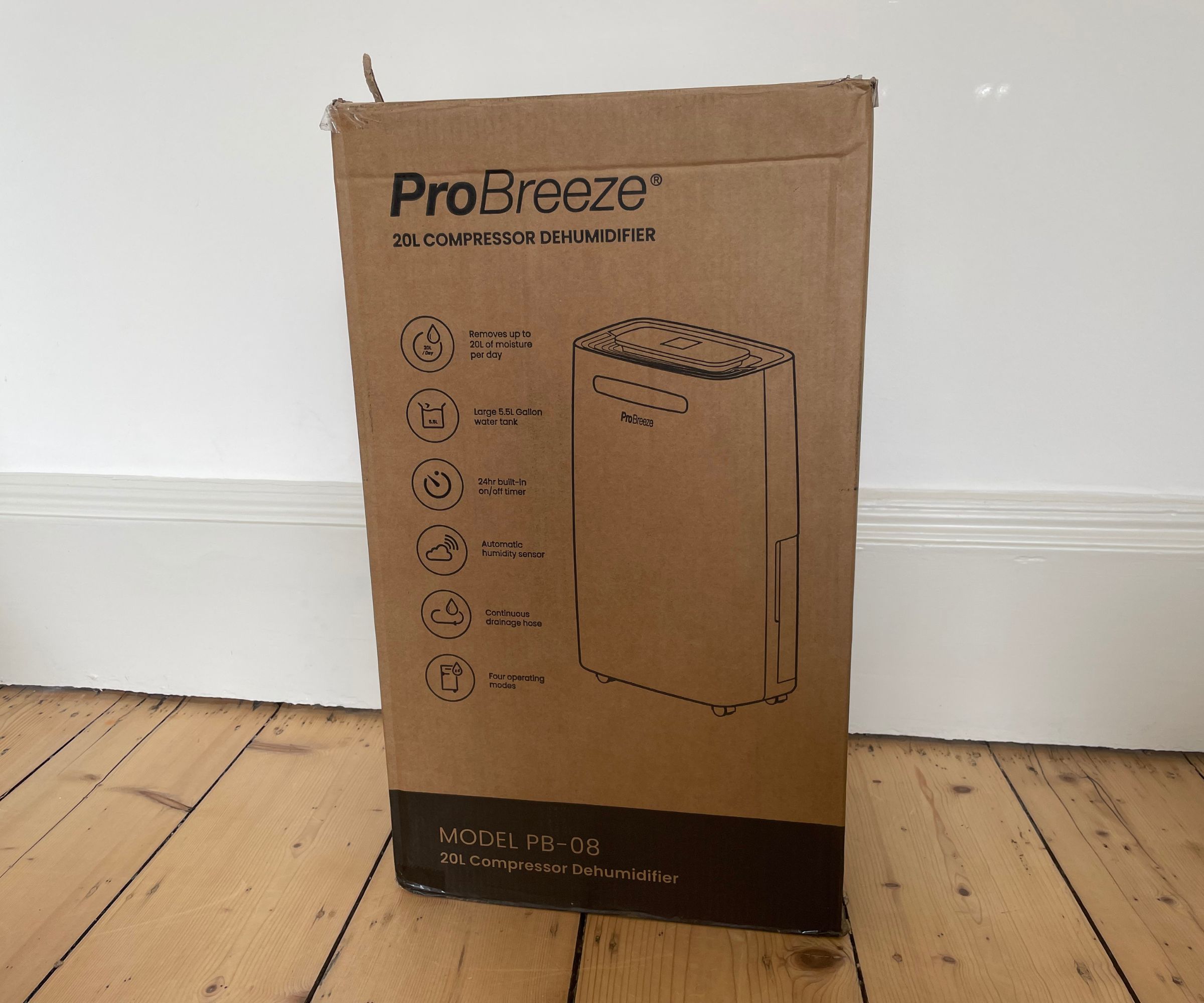
At Woman & Home, we pride ourselves on how we test dehumidifiers. The whole process takes us from unboxing and first impressions right up to cleaning and maintenance. We assess our dehumidifiers on a range of different factors, but the way that we check which homes they suit can be determined by three, easy tests.
We sit our dehumidifiers in fully-loaded laundry rooms, dripping cellars, and condensation-filled bathrooms and set them to work. We time how long they take to finish a task, whilst also looking at how much water they collect and how easy they are to use. We'll repeat this in our homes for weeks so that we can pick up on any niggles that you might find in day-to-day life.
When it comes to writing up a review, we make sure our expert knows everything they need to about a dehumidifier. We test all the functions, check how much noise they make, and investigate the warranty, price tag, and other competitors on the market. That way, you can make an informed decision on which dehumidifier is the best one for you.







